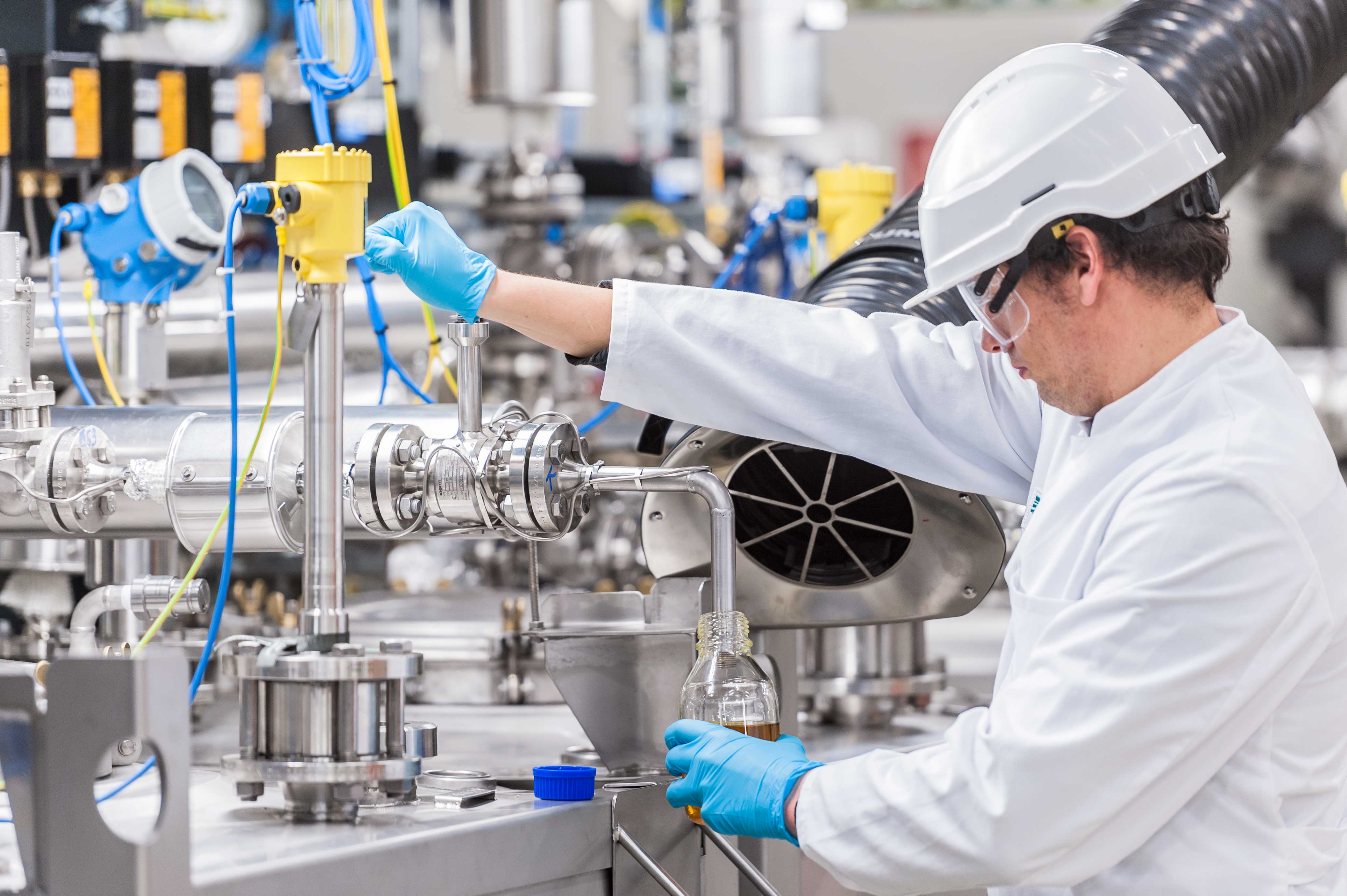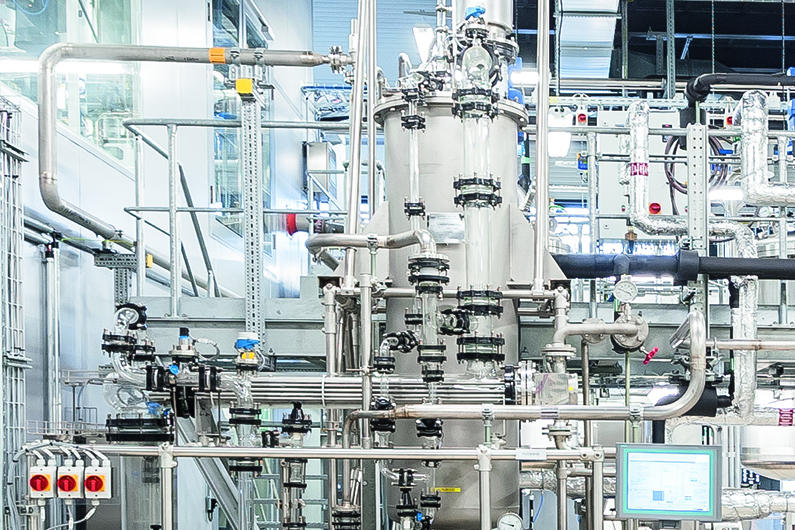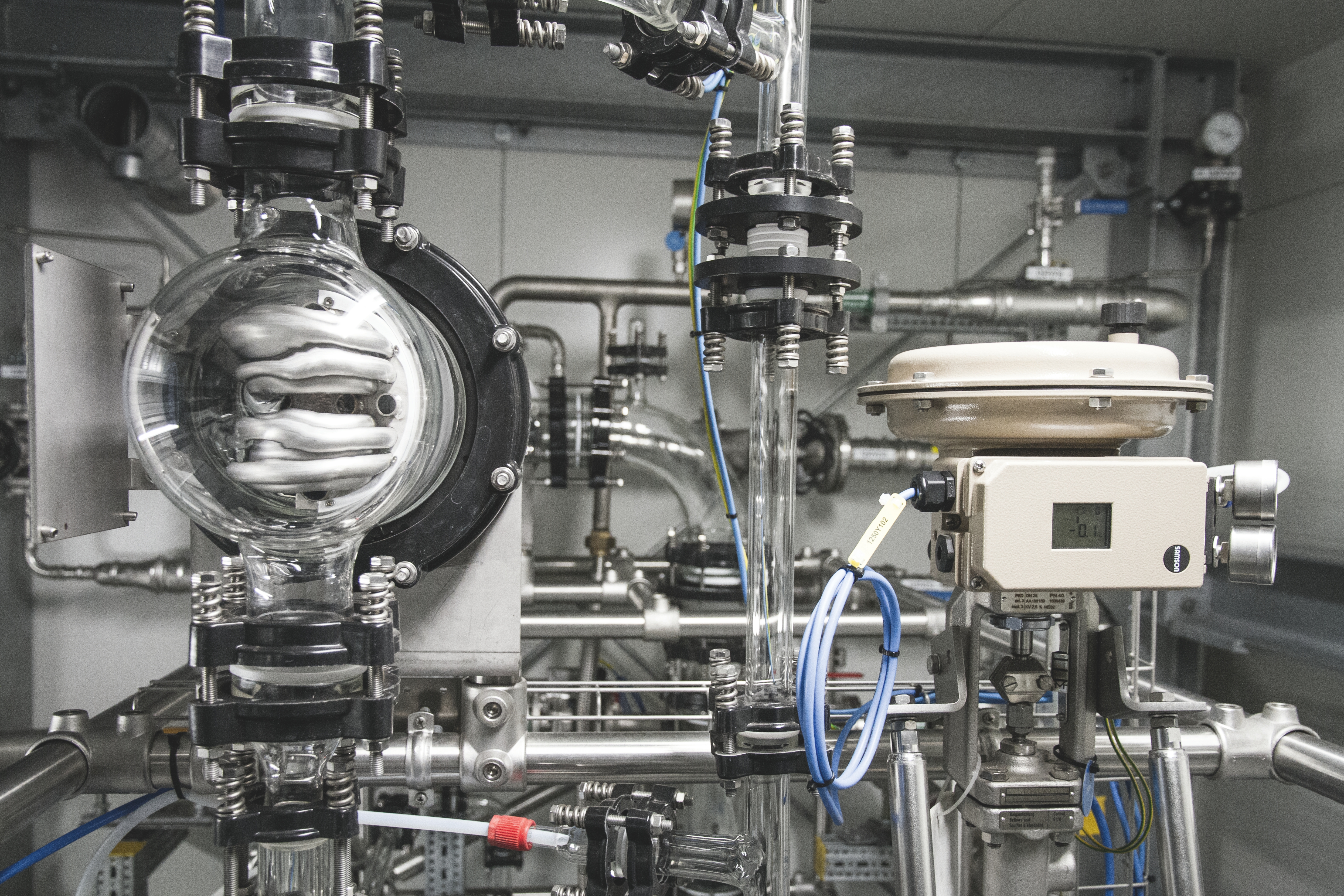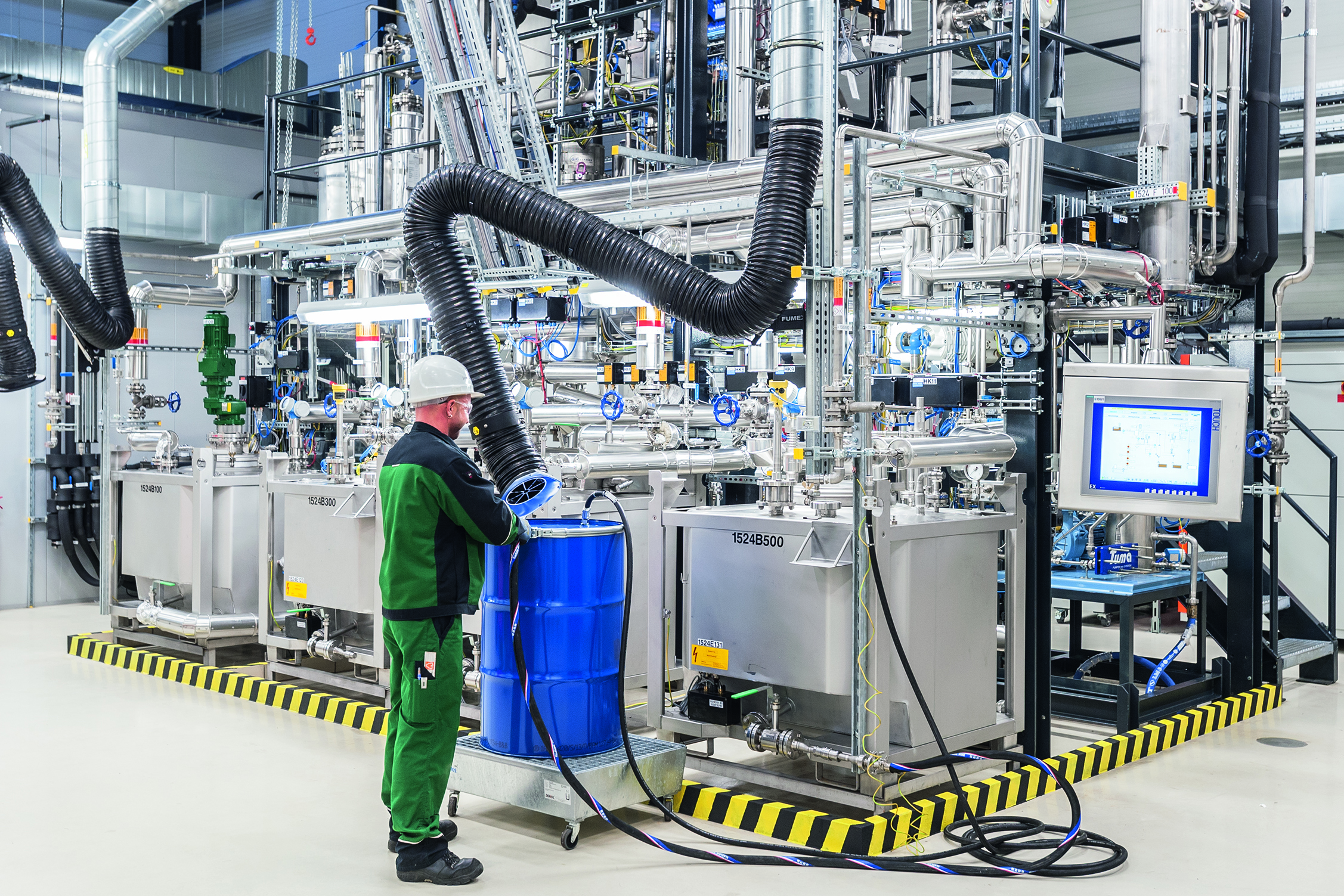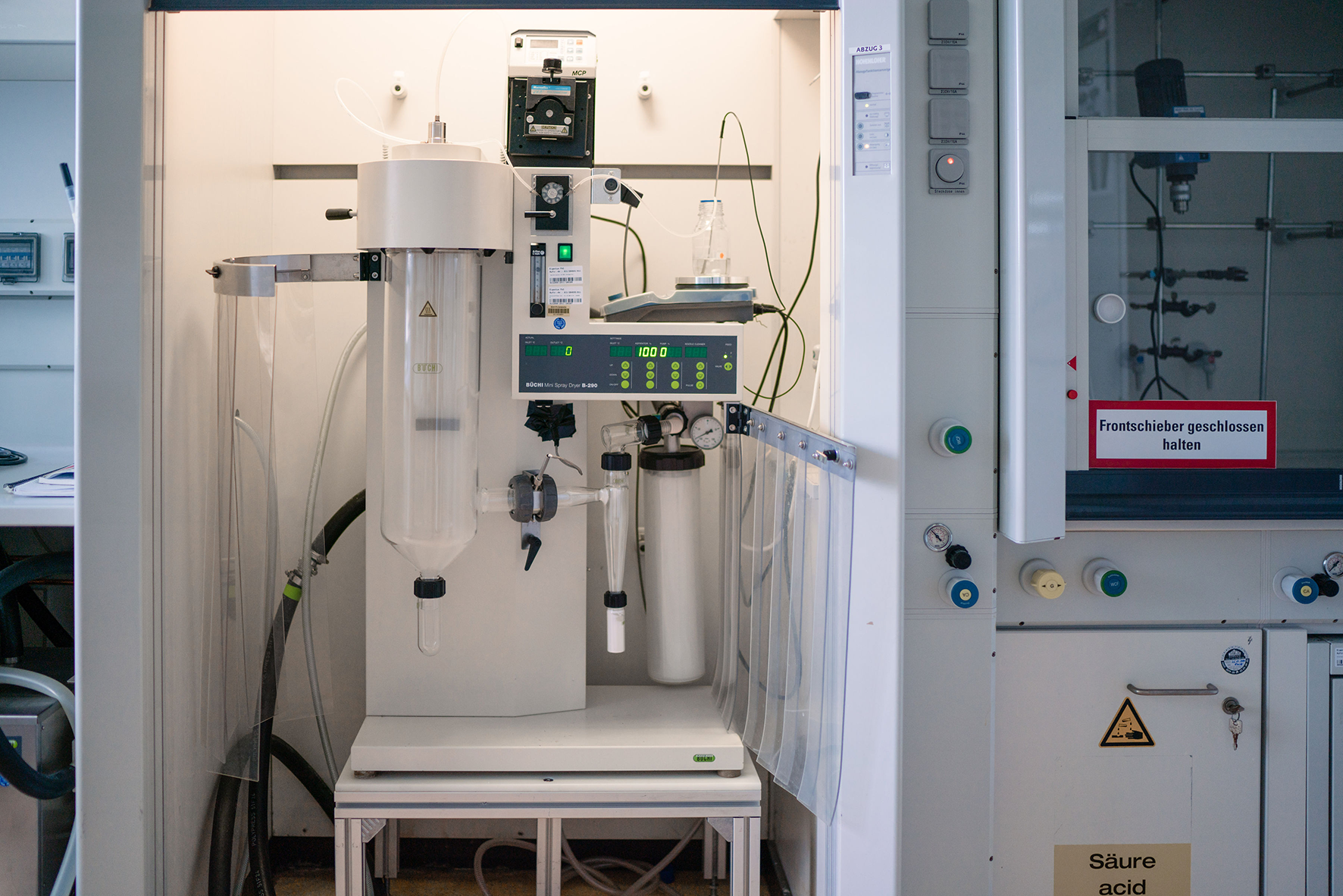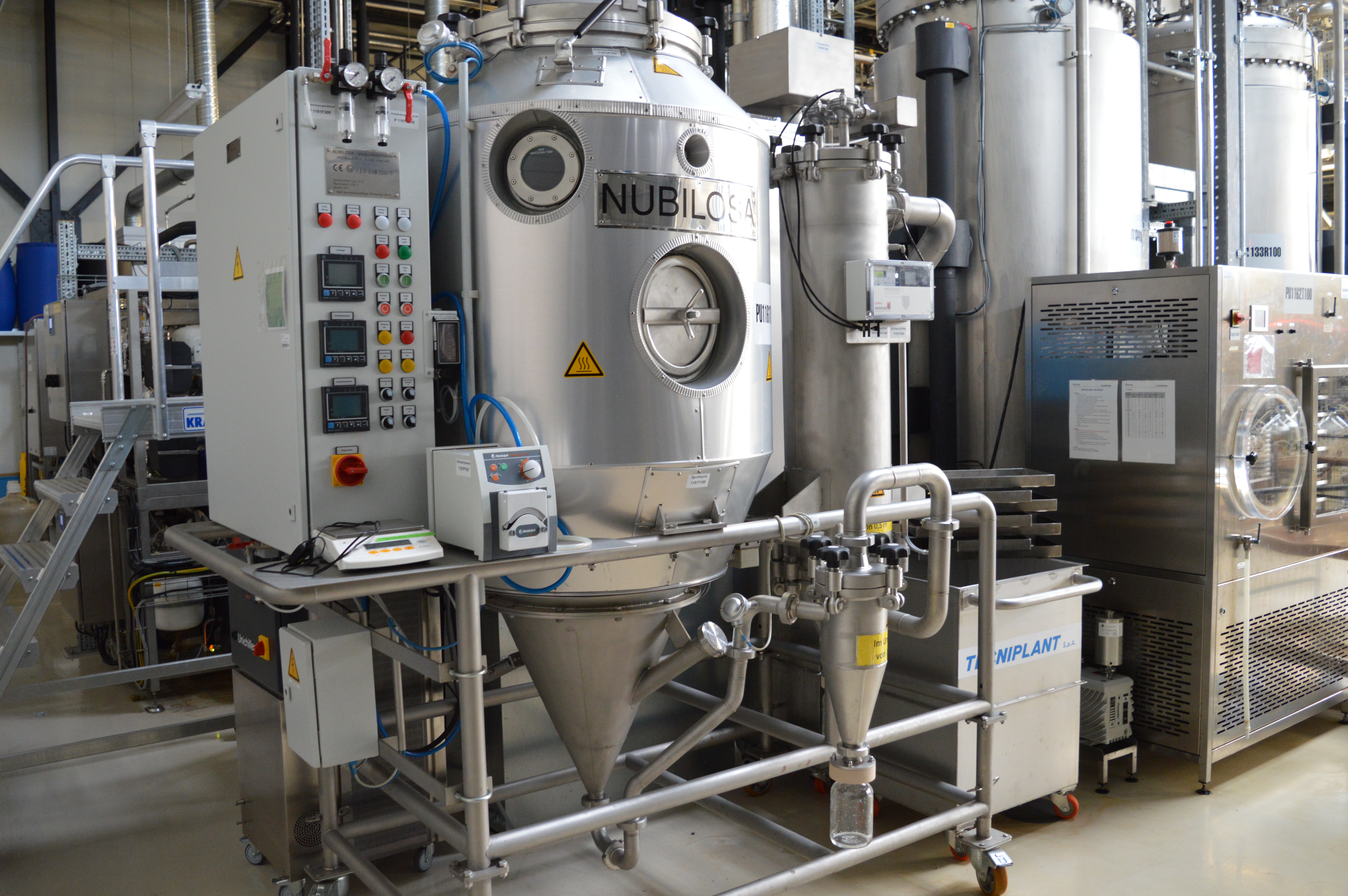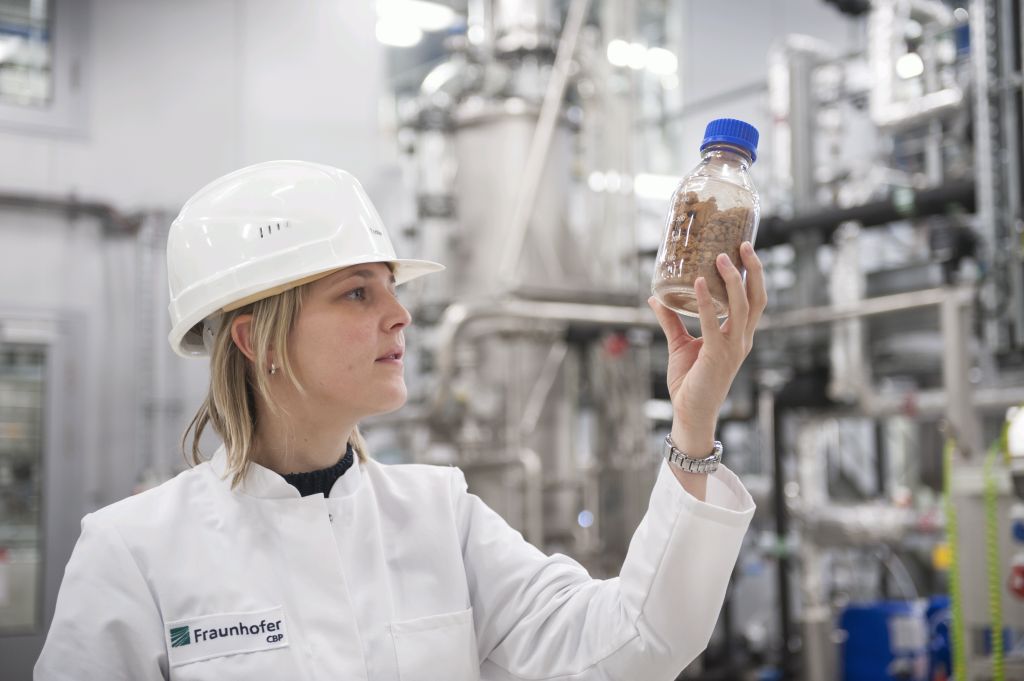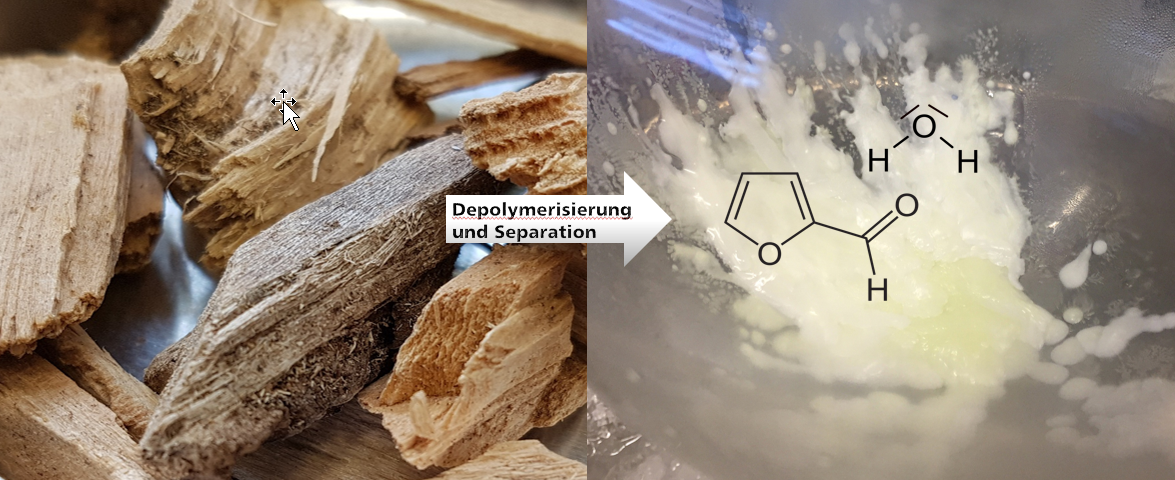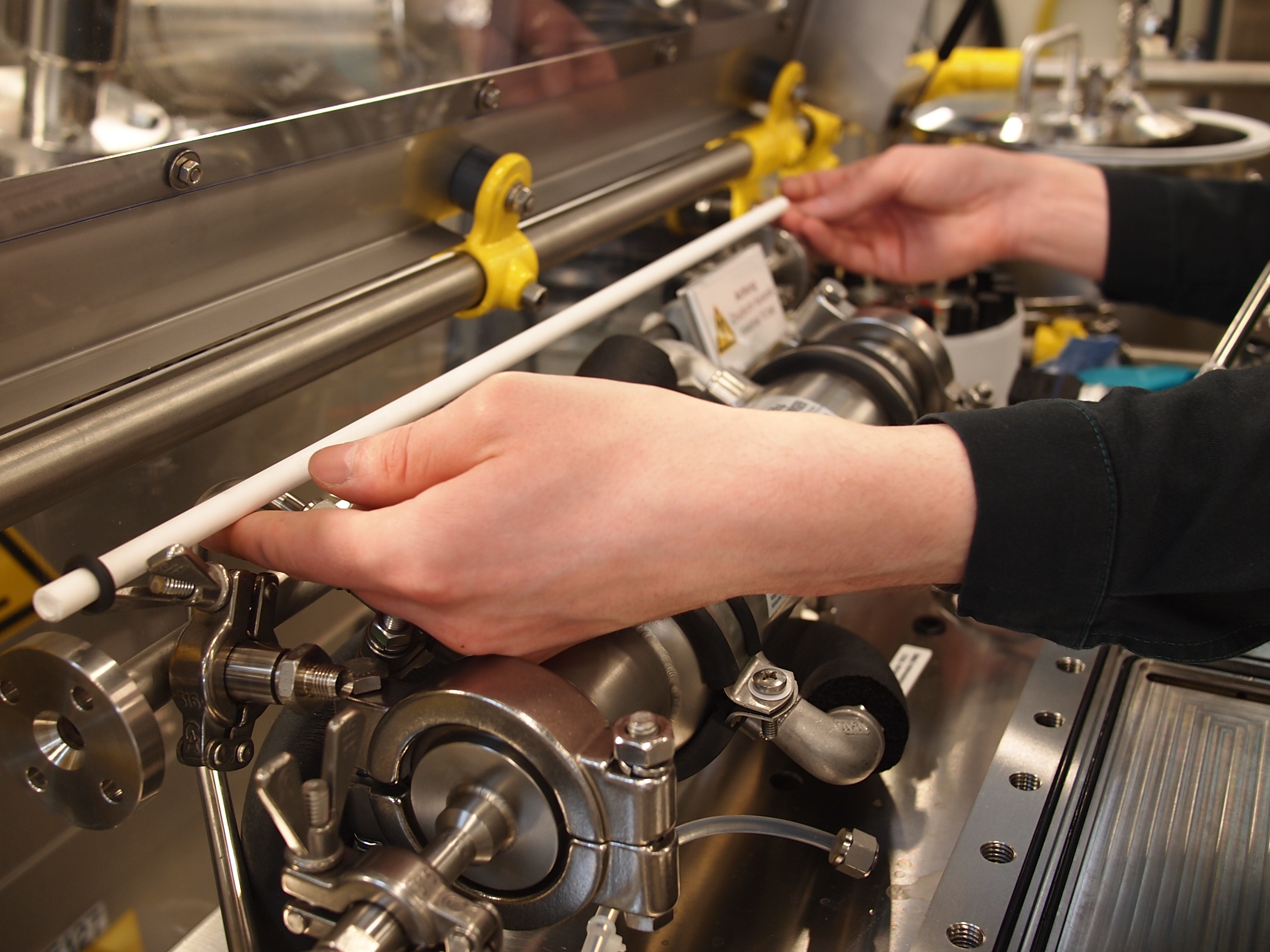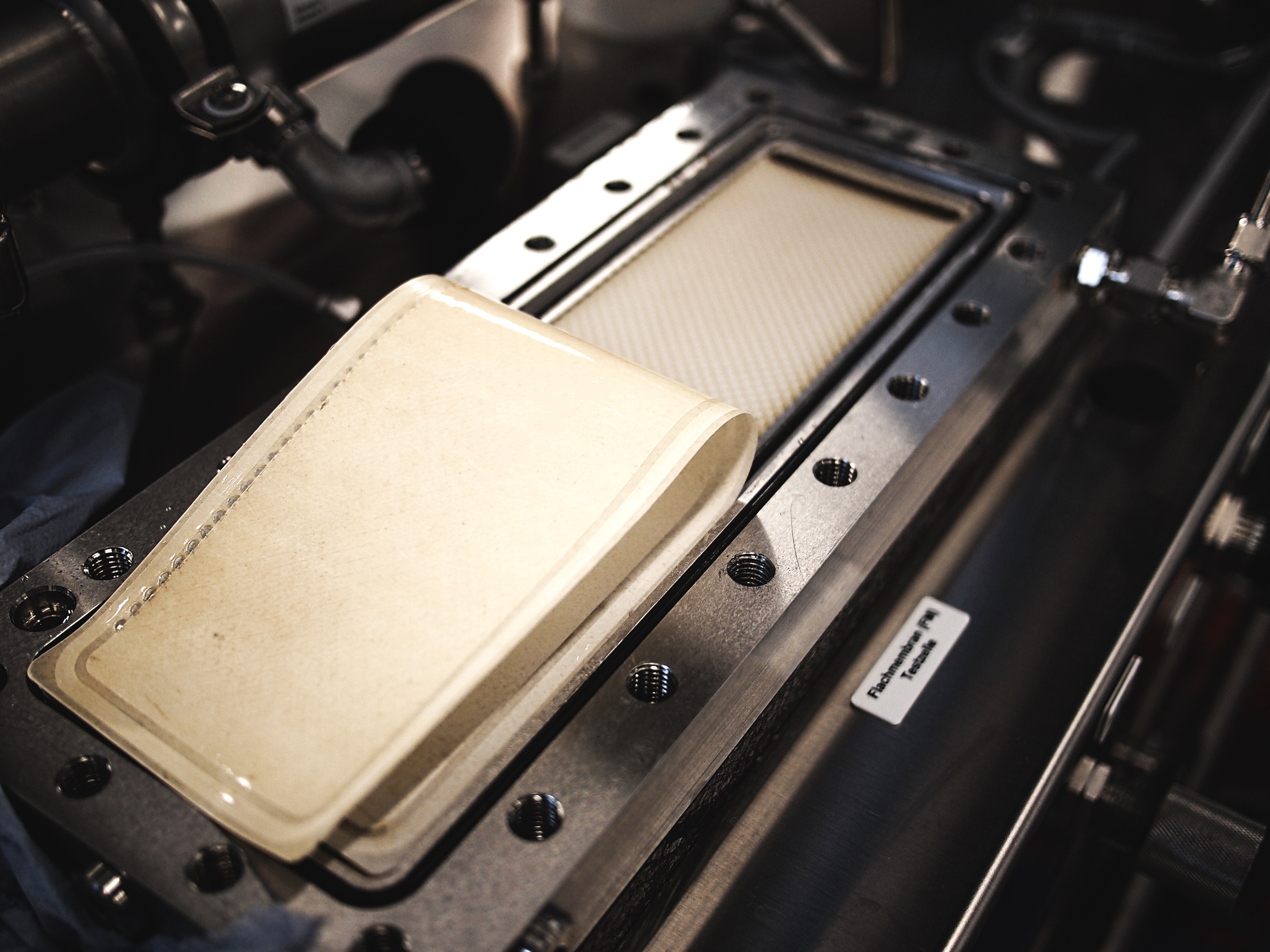Biobased furan derivatives, such as 2,5-furandicarboxylic acid (FDCA), are increasingly gaining in importance, in particular as biogenic building blocks for polymer applications. The Fraunhofer Center for Chemical-Biotechnological Processes CBP is conducting intensive research into the separation and purification of furan derivatives from process water of the hydrothermal conversion of raw materials containing lignocellulose, using a variety of thermal, mechanical and physico-chemical separation methods. Intensive research and development has been carried out in projects including those funded by the German Federal Ministry of Education and Research (BMBF), ”KomBiChemPro” and ”BBChem”, and the project ”SteamBio”, funded by the EU.
Separation by cross-flow membrane filtration
We use cross-flow membrane systems to separate off the dissolved and undissolved constituents. The aim is to separate polymers from monomers and to reduce the water content to optimize the purification process energetically. Cross-flow membrane filtration also plays a central role in the separation of temperature-sensitive substances, such as 5-hydroxymethylfurfural (5-HMF) and formic acid. Furfural derivatives can also be successfully separated from the process water using rectification, which we have demonstrated at the pilot scale with a throughput of 2.5 kg/h. Investigations into liquid-liquid extraction and adsorption/desorption revealed targeted separation of the carboxylic acids from furan derivatives. In this case, we were able to successfully demonstrate the essential feasibility of separating furan derivatives in process waters from hydrothermal conversion up to the 100-liter scale.
 Fraunhofer Center for Chemical-Biotechnological Processes CBP
Fraunhofer Center for Chemical-Biotechnological Processes CBP